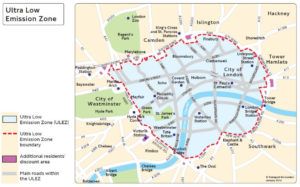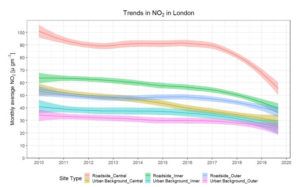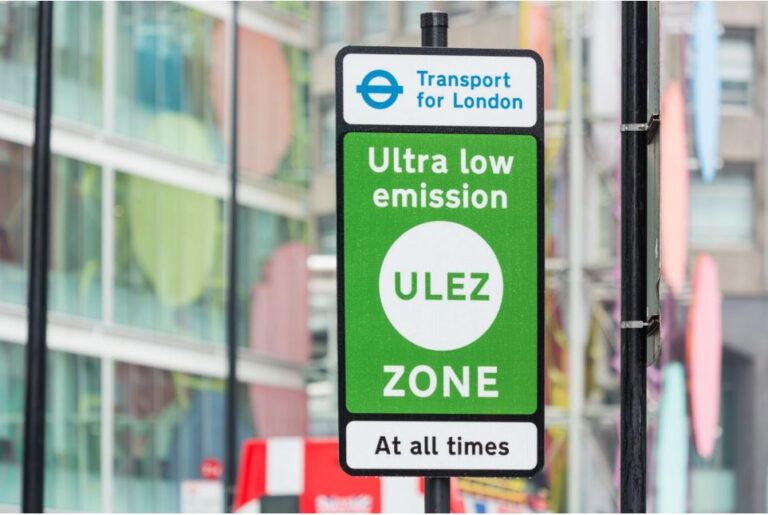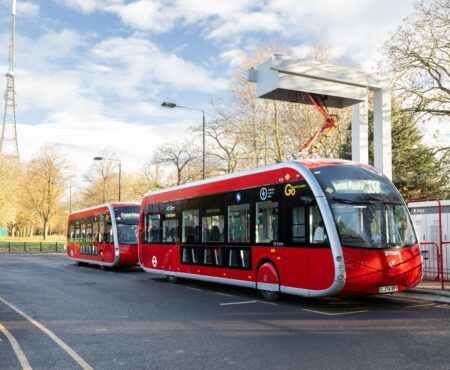The latest figures show there are now 13,500 fewer polluting cars being driven into central London every day and a significant drop in harmful air pollution, since the UK capital introduced the Ultra-Low Emission Zone (ULEZ) six months ago.
Polluting vehicles account for around half of London’s harmful NOx air emissions, with air pollution estimated at costing the capital up to £3.7bn (US$4.7bn) every year. Launched on April 8, and operating alongside the existing congestion charge, the world’s first ULEZ is helping to address the UK capital’s air quality issues that increases the risk of asthma. The ULEZ operates 24 hours a day, seven days a week, 365 days a year in the central London Congestion Charging (CC) zone. Motorists who drive in the zone in a vehicle that does not meet the new emission standard (petrol vehicles that do not meet Euro 4 standards and diesel vehicles that do not meet Euro 6) have to pay a daily charge of £12.50 (US$15.87) a day for cars, vans and motorbikes and £100 (US$127) a day for trucks, buses and coaches.
 The new City Hall report reveals that since introducing the ULEZ:
The new City Hall report reveals that since introducing the ULEZ:
- Roadside nitrogen dioxide (NO2) pollution has reduced by 36% in the zone. This is measured from February 2017 to September 2019, to reflect when the Mayor publicly confirmed the Toxicity Charge (T-Charge), the predecessor to the ULEZ, and people started to prepare for the schemes. Analysis in the report estimates that the reduction in NO2 pollution solely attributable to the ULEZ is 29%;
- None of the air quality monitoring sites located on ULEZ boundary roads have measured an increase in NO2 pollution levels since the scheme was introduced;
- From March to September 2019 there was a large reduction in the number of older, more polluting, non-compliant vehicles detected in the zone, with 13,500 fewer on an average day, a reduction of 38%;
- Of vehicles in the zone, 77% now meet the ULEZ emissions standards. This is much higher than the 39% seen in February 2017 and the 61% in March 2019;
- NOx emissions from road transport in the central zone are now 31% (200 tonnes) lower than if the scheme was not in place. This is ahead of schedule to meet the 45% NOx emission reduction expected in the first year;
- There was a reduction in traffic flows in central London in May and September 2019 of between 3-9% when compared to 2018, indicating the wider benefits of the ULEZ in encouraging people to switch to walking, cycling or using public transport;
- The ULEZ is also tackling the climate emergency. After six months, carbon dioxide (CO2) emissions from road transport in the central zone are 4% (9,800 tonnes) lower than if there was no scheme.
 “The introduction of the ULEZ this year was a significant moment for Londoners’ health, as the evidence of its first six months clearly shows,” said Alex Williams, Transport for London’s (TfL) director of city planning. “Nearly four out of every five vehicles now entering the zone meets the tough emissions standards, reducing harmful NO2 pollution by almost a third.”
“The introduction of the ULEZ this year was a significant moment for Londoners’ health, as the evidence of its first six months clearly shows,” said Alex Williams, Transport for London’s (TfL) director of city planning. “Nearly four out of every five vehicles now entering the zone meets the tough emissions standards, reducing harmful NO2 pollution by almost a third.”





